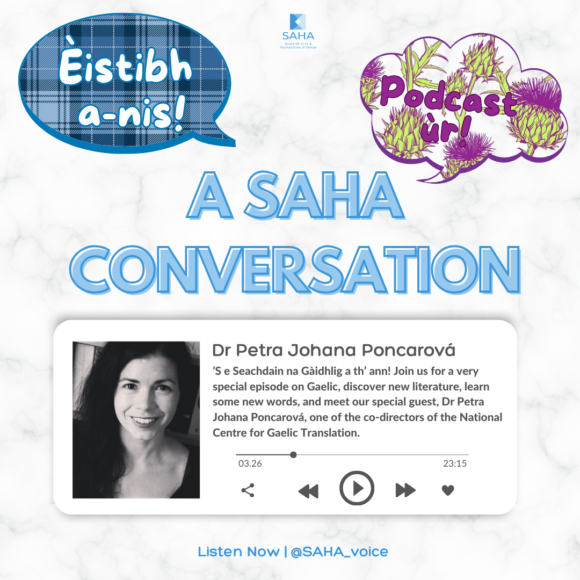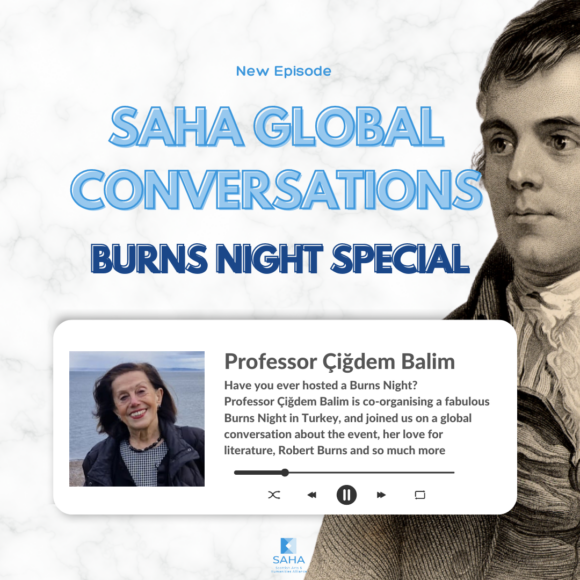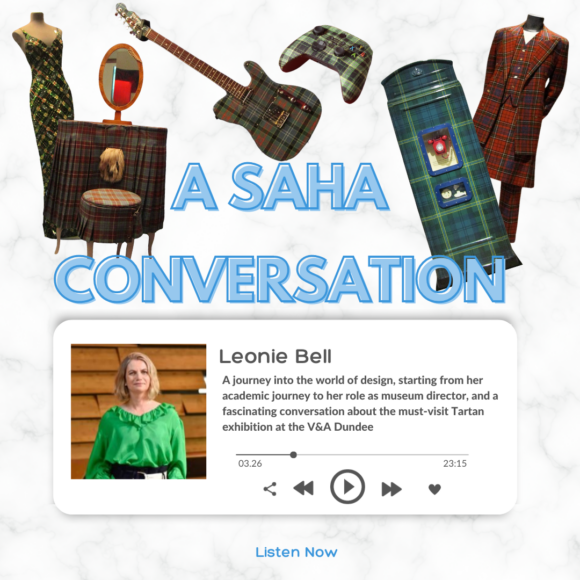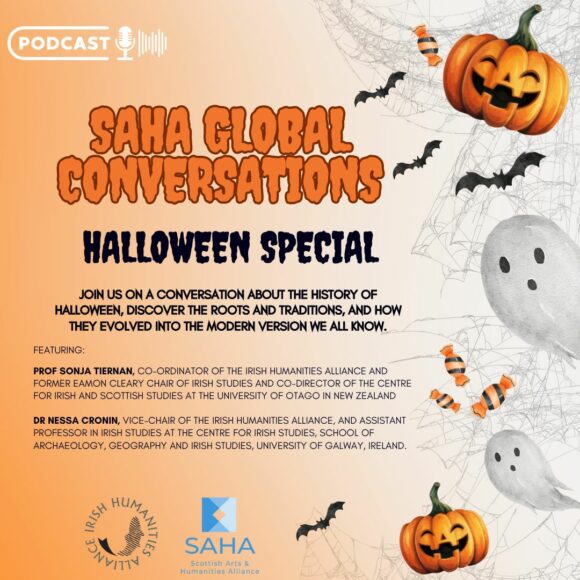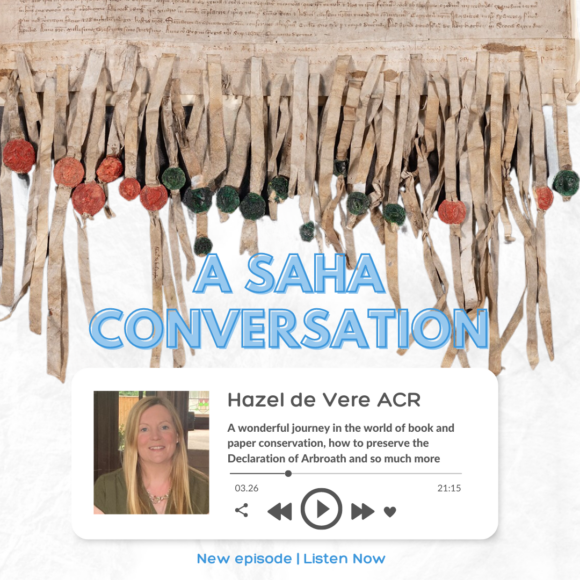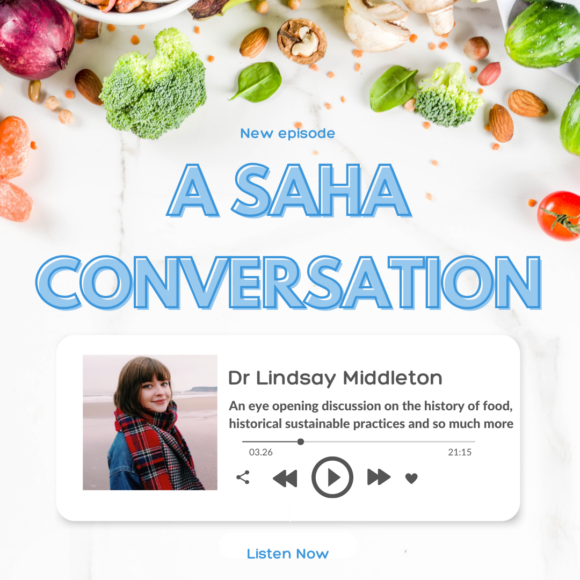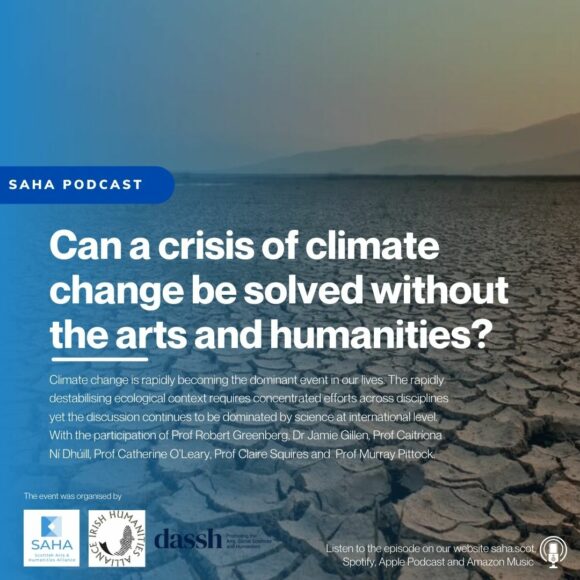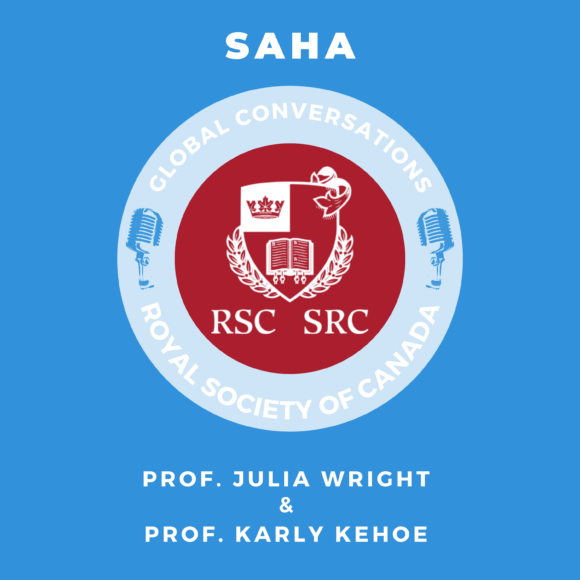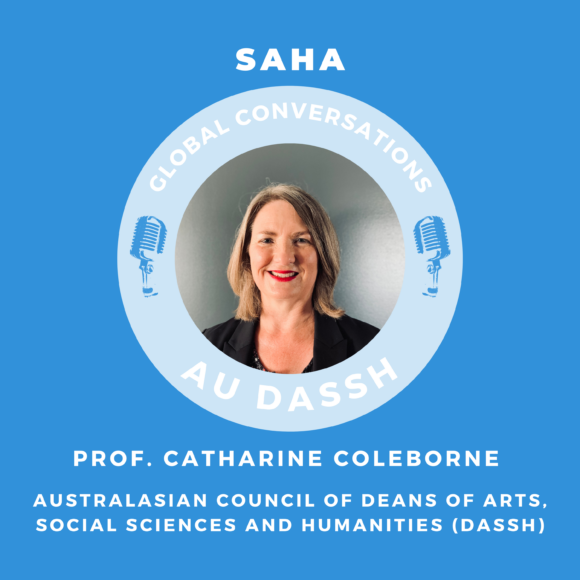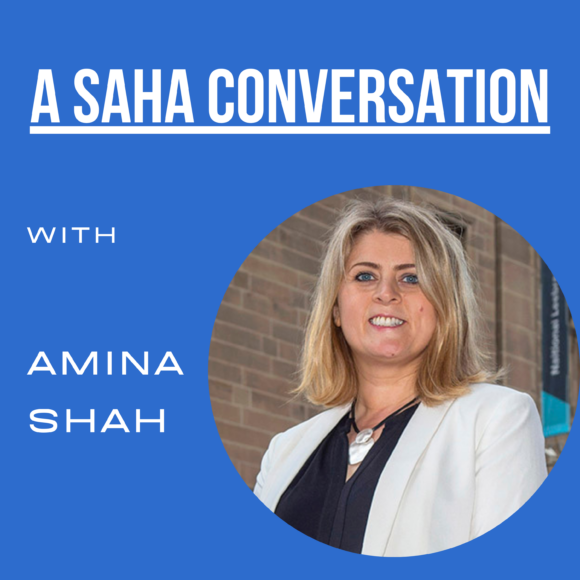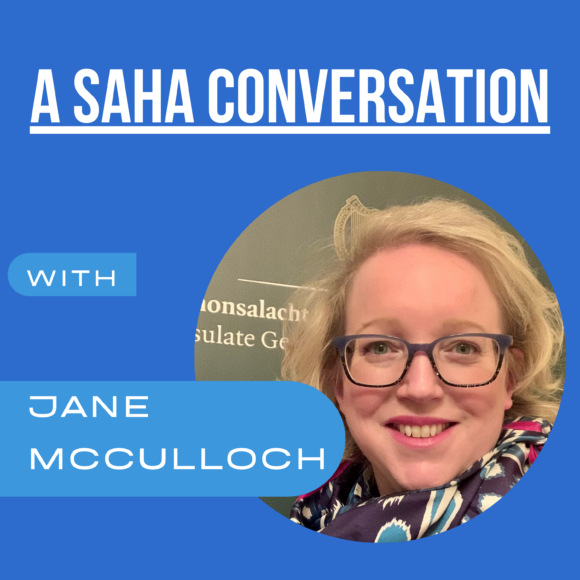We are delighted to bring you the last podcast episode from our SAHA Conversations series. Our conversation partner is Philip Long OBE FRSE. Philip is Chief Executive of the National Trust for Scotland. He has an extensive experience in the arts & heritage sectors in Scotland and he is the founding director of V&A Dundee, a landmark museum and cultural institution in Scotland. As usual, Philip has links with several SAHA member institutions. A fellow of the Royal Society of Edinburgh, he is also an Honorary Professor of the University of Dundee and an Honorary Research Fellow of the University of St Andrews. Philip has received an OBE for services to culture and heritage in 2020.
 Transcript
Transcript
[01:58] Cristina: Thank you for joining our SAHA Conversation today, Phil. We’re delighted to have you over as our guest and discuss quite a number of things, all to do with heritage and culture. So, our SAHA Conversation series would usually begin with a question on our guests’ career trajectory, and we also ask them to reflect on their university studies. So that’s my opening question to you. What are your key reflections when you look back on your career and where you started with your studies?
[02:35] Philip: Well, thanks very much for inviting me, I’m delighted to be a part of this. Well, my university studies began back in the mid-1980s. I was a visual arts student at Lancaster University. And I suppose that my reflections on that are that it was a very inspirational time of finding out about new things, meeting all sorts of people. And especially, I suppose, trying to put any ability I had in visual arts and in particular, making art, into practice. So that degree was in making art and I specialized in making sculpture. Otherwise, I also made work in photography and in painting and design. One of the things I particularly enjoyed about it was, rather than it being a course within an art college, and so with a very substantial focus on the making of work, it also had quite a substantial academic element to it in art and design history, and also in other fields, which I chose to study in, in archaeology and in history. And I think that those factors, the fact that I was making work in, if you like, in an art environment that was very influenced by everything that was going on in the exciting world of contemporary art; and in the mid-1980s, and into the late 1980s it certainly was a very exciting world with all sorts of developments, particularly in painting in the UK. I was always interested in the heritage context of all of that in archaeology and in history, and in architectural history. So, I suppose there were some signs there as to what was eventually to come. But I think one of the things about that degree was it was quite general, there were very many things to study and a reflection on it that I have is that it perhaps didn’t have the focus that I needed. And so, I went on to a postgraduate degree in museum and gallery studies at Essex University, which was both practical, in that it involved the understanding of museum practice and the organization of an exhibition with colleagues on the course, as well as the academic. And I looked particularly at some of the language that is behind the architecture of museums and galleries to understand how we have thought about and how we’ve chosen how we represent past cultures. So, the difference in doing that undergraduate degree was that it had a particular focus on a career path that was vocational into museums and galleries work. And I enjoyed that very much. And it was very helpful to me, because I suppose it came at a time in my life, in my early 20s, when there are so many choices ahead of one, and particularly in the fields that I was interested in, in the arts. And often is very, very hard indeed, to know where one might go, what one’s career might be. So that postgraduate degree certainly helped me in that.
[05:42] Cristina: Thank you. And it’s nice to think about, you know, how studies are weaved with your current role at the National Trust but before we move on to discuss heritage more specifically, I wanted to ask you to reflect a little bit on your work with V&A Dundee, as we’ve noticed that you’ve been involved in its development from very early on. You worked on the project as its first director. So we were wondering what impact do you think its development has had on Scotland, but also thinking of the artistic community, what impact it has had on the local artistic community?
[06:24] Philip: Well, I think it’s had a great deal of impact and it certainly had a great deal of impact on the people that were involved. I’m very proud of being involved with V&A Dundee. I worked on it for just short of 10 years. It’s perhaps just worth saying something about what I did prior to that. I was a curator at the National Galleries of Scotland for almost 20 years. And so over that long time there, I was able to learn in particular about my … what became my own specialist interest, which was in Scottish art and design from the late 20th century very much up to the present. And I had the opportunity to research and organize exhibitions, as well as do all the things that curators need to do in these jobs which they must do, caring for the collections and the buildings, and thinking very carefully about the experience that people have and how we inspire people and encourage people to come to our galleries and to find out about the visual arts. So, in doing that job at the National Galleries, what was very clear to me and a great inspiration was that, that creativity and art have an enormously important part to play in people’s lives. It’s often at the vanguard of commentary on some of the most important subjects and topics of our day. And of course, simply its beauty can be incredibly inspirational and very rewarding, above and beyond the practicalities of every day. So, when I heard that there was a possibility that there was going to be a new museum in Scotland, a V&A, I was very excited at that. And I was especially excited that there was a possibility it would be in Dundee. Because Dundee over many years has perhaps had a difficult reputation, one which has been associated with challenges both socially and economically. And so the prospect of a V&A in Dundee, and that partnership between the V&A and Dundee, I thought was very exciting. And so I was, I felt very fortunate to be appointed the first director, and yes, I was the founding director, if you like. I came in in 2011, long before the building had begun to be constructed. And so it was my responsibility to develop the project overall and work with a partnership in Dundee which combined, and I think this is interesting, combined both academic institutions such as the University of Dundee and Abertay University, together with other organizations like the V&A, and the City Council, and bodies funded by the government, such as Scottish Enterprise. So, it opened in 2018, took many years of work to establish it and get it constructed and develop the team. And why I think it’s really important is … perhaps boils down to two elements, I think the first thing is that is the first museum that’s dedicated to exploring the importance of design in all our lives in Scotland. And in fact, it’s the only other design museum in the UK outside London that does this. It looks at design as something that’s formed our past, that is a vital part of our lives every day and for the future. I mean, design is something that we make decisions about every day, whether it’s the font that we use, or the pen that we write with, or the choices that we make and in so many parts of our life. And so it seemed a very exciting thing that a museum institution could be responsible for examining this and helping people find out more about the importance of design in our lives. Design can be incredibly beneficiary, and it can also be damaging, bad design can be life-threatening. So that, if you like, is the mission of the institution. But the second element, which I think is important to talk about, and you asked the question about its development on Scotland, is that it was actively a project which set about to contribute and to make a difference to the city of Dundee, which as I’ve mentioned, has had very many difficulties. Dundee in the 19th century and 20th century was a city of great prosperity at least for the mill owners, the industry which dominated its work and which gave employment. But that traditional industry began to fail in the middle of the 20th century and Dundee although it worked hard to try and diversify its industry, it had found that problematic. And by the 70s and 80s, Dundee was suffering from high levels of unemployment and as a consequence failing industry and as we all know, that leads to very difficult circumstances for the people of the place and Dundee has been known as having some of the worst deprivation statistics in Scotland, the UK and in fact in Europe. And so an ambition came about to redevelop the city and V&A Dundee, if you like, has been a flagship project in that because it is a symbol of ambition and achievement. It was a complicated project to deliver and to fundraise for. And it was done in Dundee. Dundee has the first V&A in the world, outside London. And so it is a prestigious project, which says, I think a great deal about the future ambitions of the city, its ability to make things happen, and also the value that a place like Dundee puts on the importance of understanding creative culture as a part of our lives. And we have seen how it has helped contribute to the city and for those that would like to really get into the detail on that I’d encourage people to look at the V&A Dundee website, in particular to look at the social and economic impact studies that were done shortly after the opening that gives some very, very impressive information on the effect that it has had.
[12:13] Cristina: Thank you. I think it’s very interesting, you know, when you think of the stories and narratives around how culture can transform a city, and we actually had another podcast guest, Dr. Bridget McConnell from Glasgow Life, and she talked in a similar manner, in some ways, about the way that the projects that she’s overseen during her career have actually transformed Glasgow quite a bit. And it’s a very powerful message, I think, when you look back on … how culture can contribute to so many areas that at first sight, you don’t think they’re necessarily related.
[12:50] Philip: Yeah, I completely agree with that, places of culture are absolutely vital in our culture. And they often have been substantially in our cities. And that is not a new thing, that goes back… that goes back millennia, and places of learning or museums, these sorts of cultural institutions have been a vital part of our urban centres for a very, very long time. And I think that it’s something that we’ll all have been reflecting on with the great difficulties over the last two years, particularly when we were so restricted in being able to go out and see things and when organizations needed to close for public health. How difficult it was, and how people felt the … that it was, it was such a strange thing to not be able to take up all of that culture that is around us, whether it’s seeing historic houses, or whether it’s going to a gallery to see your favourite picture or seeing exhibitions, and that places for feel quite bereft without these things and that gives a clear indication of just how important culture is as part of many people’s everyday lives.
[13:57] Cristina: Yes, I think I wouldn’t be able to argue with any of what you said just now. You also, I think, if I’m not mistaken, maintain some strong links with several academic institutions in Scotland. So, I was wondering if you’ve noticed some specific traits that the arts and humanities Scottish landscape has?
[14:19] Philip: Yeah, it’s very important for me personally. And I think it’s very important more widely. And I say personally, because in my responsibility, whether it was at V&A Dundee, or now for the National Trust for Scotland, a great deal of every day is taken up with all of the practical direction and management of the organization. And it’s very important to remember now what these organizations are fundamentally for, they are about the care of the culture of… of this country, and we can far better care for our culture and heritage if we understand it better. And it requires time and careful consideration to understand that culture, so we can better help share its importance with people more widely. It can be quite practically difficult to work on that sort of area because of the practical needs of every day. So I think it’s very important to keep in contact with organizations, with bodies whose dedicated purpose in academia is to research and understand and to share that knowledge. So, it’s important for me to continue to keep abreast of subjects of interest, what is going on more widely in fields of cultural… culture and heritage. And I think that organizations like the Trust and others, because of just simply the practical requirements that they have, means that they never have the resources to research into all of the extraordinary material that they have. And so partnership … and neither do I think they should do that on their own … partnership with academic bodies, that, as I’ve said, have the dedicated resources and expertise to be able to do that is absolutely vital. And in the National Trust for Scotland, which I’ve only joined fairly recently, we have good academic partnerships, but I would like to see us grow these in the future.
[16:17] Cristina: Yeah, I think that’s very important. And the collaborative PhDs, that model that exists in Scotland, is very useful, both for PhD students and the universities themselves, but also for the institutions. And I would like to stay on the kind of heritage field discussion for a bit, and just ask you to think a little bit about heritage as a destination for graduates. They’ve come out of like arts and humanities degrees. And I was thinking in that sense, what areas of work in the sector do you think would benefit most from the skills and knowledge that come with such a degree?
[17:00] Philip: Well, I think there are infinite areas. Because if we understand that the heritage field is really about all aspects of human culture in the past, and it’s just as relevant today, and it’d be interesting to talk about … about the value of heritage today, then I think that there are so many skills and requirements that the heritage sector requires. It might be that there’s a presumption that the heritage field is one dimensional, that it’s responsible for the practical care of places. Or that perhaps it’s a body that is preoccupied with getting people through the door, with visitor experience, to enable that care to happen. But actually, it is so much more than that. And since joining the National Trust for Scotland, I have been amazed as to how many areas we deal with at the National Trust for Scotland, which will be of both interest to arts and humanities students and graduates, and people much, much more widely. So at the Trust we have work which goes on about learning in respect to the heritage, conservation in respect of that heritage. And that in itself is a very diverse topic, and one which brings all sorts of contemporary elements to it, which are very important. So to give you a couple of examples, we need to think about what the right treatments are for the conservation of stonework that will respect the methods…when they were constructed. But we also need to think about what the effects are for example of environmental change on our buildings. And we know that there is legislation coming which requires buildings to be more resilient to climate change. It’s a challenge doing that in respect of heritage buildings that are not easily adaptable. Archaeology is an important part of our work, we have at least 10,000 archaeological sites within the Trust. And to carry on, we have curators who are responsible for developing their expertise of the collections and helping our colleagues to interpret those collections for people. We have people working across a whole range of policy areas at the National Trust looking into things like the effects of human interaction with the marine environment. I could, I could go on, I think the point I’m trying to make is that the National Trust for Scotland what we are looking after, might at first of all appear to be about to do with the built heritage in the natural environment, but so much of that built heritage and that external environment has come into being because of human design. And so there is an enormous number of subjects for exploration. And I would also say that I think that the place of heritage now in our country is something that is really interesting to explore as to its relevance. We know, for example, that places of heritage that we look after are very important places in local community, they support employment and similarly, communities help heritage places to be looked after by working with us.
[20:25] Cristina: Yeah, I think, you know, there’s often maybe from the outside this idea that heritage is a lot about the built environment. But I remember being involved in an academic role when Historic Environment Scotland was developing their policy ‘Our place in time’ in 2014. I remember sitting in meetings where it was so much, yes, maybe they were discussing something a building or something … specific site, where they’re often discussing about people, about their connections to the site, about basically a lot of intangible heritage and I was very excited about this, because this is like, my area, intangible heritage, it’s my area of research. So, anyway, that kind of made me think about, you know, the idea of heritage as this dynamic process, that we’re continually thinking through our connections to the past. And there is this, now I think it’s everywhere, in any academic book, there’s this idea that heritage is made in the present and that we’re continuously interpreting and reinterpreting the way we relate to the past and the significance different buildings, sites, practices have. So in that sense, I was wondering, how do you see change in the Trust. And thinking here of maybe the last decade, for instance, as research in this area is very dynamic and in the last years we’ve seen quite a number of very important debates in the heritage field. And I was wondering how this has had an impact on the Trust?
[22:10] Philip: It’s a very good question and there’s lots, lots to discuss so I’ll try and keep it just a small number of subjects. I think first and foremost what of course has been in many people’s minds and there’s been a great deal of public interest in, is this how human involvement has shaped our heritage, and shaped our heritage in a period of history where what has happened and how that heritage has … that built heritage or that designed heritage has come into being is no very much open to questioning. And of course, I’m particularly talking about connections between heritage and slavery. It is, of course, the case that much heritage in the past has come about through being financed as a consequence of people’s wealth through the enslavement of people. And so this is really very, very interesting. Because I think what is becoming increasingly important and of interest to all people, is the stories that are behind our heritage, the fact that it is people that have brought our heritage into being and people we know very much, our members tell us, want to find out about these stories behind the properties that we have. So understanding those stories and researching into that is vital. I think what has also developed is a sense that our heritage goes far beyond our built heritage. The Trust, for example, is responsible for many historic houses and castles. But actually, the largest part of its responsibilities are in the outdoor environment, the natural environment or the designed environment. And as a consequence of many things, but especially the climate crisis, there is a growing concern and understanding of the importance of how we treat our natural environment. And how that natural environment has been treated is also part of our heritage, people have had a very, very considerable effect on the natural world around us for a very, very long time. Whether it’s crofting in parts of Scotland, or whether it’s our agriculture and agricultural practices in food, or our policy as far as forestation is concerned, all of these approaches have an effect on the environment around us, which is also part of our heritage. So I’ve seen that in particular become of increased interest in really a quite a short period, within bodies like the Trust. The Trust has always been interested in these areas. And I think that what we see is there is an increasingly wide awareness and concern about how we treat our natural heritage.
[25:06] Cristina: That’s very interesting to hear. We mentioned also earlier COVID and the lockdowns that we’ve all faced in the recent past. And I was wondering, in that sense, if the pandemic has had any influence on our collective understanding of heritage also?
[25:24] Philip: Yeah I think absolutely the pandemic has had an effect on this. Whether it is as I was saying earlier, the fact that people have not been able to engage with their heritage. By that I mean visit their galleries, or go to historic parks and houses. All of these things are such an important part of people’s lives every day. I see this at our properties, for example, at Newhailes. And Newhailes is a wonderful 18th century house … which has had such an important part in the story of the Scottish Enlightenment. But it is also a place where people go to meet friends, walk their dogs, enjoy the landscape around there, have a cup of coffee, play with their families, tend to their allotments. And all of these comes under the responsibility… all of these things can be done at that place. And it is a place of heritage but it’s a place of great importance to people also. And so not being able to go to these places has I think very much meant that people have reassessed their importance. I also think that the pandemic, of course, has made us all aware of our fragility, human fragility in the world, and think about what is important to us and perhaps think about things which are less transient and which seem to be long-standing and valuable parts of our lives. And I think that the places around us that we treasure and the inspiration that we get from our heritage, and the inspiration that we take from our learning about past ways of life, has also become something that it’s important increasingly to people. And I would finally say that people have all the more valued being able to go outdoors into the natural environment which is also part of our heritage in the last two years when that liberty has been taken away from us.
[27:17] Cristina: Thank you. To move in another direction, I wanted to ask you a little bit about policies, policies around heritage. And I’ve noticed, with work that I’ve done previous to my role now, that there’s a lot of misunderstanding, I guess in some sense, as culture and heritage are sometimes … are used either together, or one is used instead of the other. And although they are linked conceptually, they’re also quite different, I think. And this can be seen in UK policy, but it can be seen in European policy also. So I wanted to ask you what could be improved, so that policies that are better, for heritage specifically, would be available in Scotland, but maybe also at UK level?
[28:12] Philip: Well, it probably wouldn’t surprise you to hear me say that, that I think that culture and heritage are such an important part of everybody’s lives, and we can take such inspiration from them. So I do think that the more that can be done to enable people to better access our culture and heritage, and that it is valued is something which is fundamental to our well being. And our well-being in many, in many ways, including our economic well-being are all areas that could be looked at. I suppose I would go back to an earlier point, which I think I made, which is that our heritage and our culture isn’t something which is really only restricted to something that we choose to do in our leisure time, they are absolutely fundamental to our lives. And I think that the last two years of the pandemic have shown how important our culture and heritage are. And I think we can make much more of them. And we work with politicians, with elected representatives, to continue to make that point. Heritage and culture for example, as I’ve also touched upon, play a vital part in community, they can be the means by which people come together. And they can be the means by which people can feel less isolated. They can contribute to a local economy through employment and helping to develop a sense of place and identity. They contribute to our national economy through encouraging interest in our country, through tourism. Tourism is such a vital part of Scotland’s economy. And at the heart of that is that people want to come and understand our culture and our heritage. There are so many reasons why we need to take good care of our heritage. We owe it to the understanding of our own society and history. But it’s also an absolutely vital part of our well-being now. And so I think there are many policy areas that can take greater advantage of the riches of our culture and heritage. It is not simply about enjoyment of, let’s say artistic creativity from the past, our culture and heritage have such an important ongoing contribution to make to our understanding of the world and our well-being in the world.
[30:45] Cristina: Well, thank you. Just to conclude our discussion, I wanted to ask you, and again this is something that we ask everyone who participates in these SAHA Conversations, and that is just what advice would you have for students who are now considering choosing arts and humanities degrees in Scotland? And also what advice would you have for those who are graduating soon?
[31:14] Philip: Well, I suppose I would reflect on some of my own experience on that, because I was a student who had a deep love of the arts and wanted to be involved in the arts in making it and many other ways. But it wasn’t really clear to me what I would go on and do I think, at that point. Often as a student in one’s 20s, but of course, people study at all ages, is … it’s very hard to know what one would do, what one’s vocation or choices might be. So I would encourage students who are looking at Arts and Humanities degrees to be really inquisitive to their universities about what might lie beyond them for that. My experience, and I’m not sure how much this has changed, I’m sure it’s changed very much for the better, is that there was an insufficient level of guidance about how one might develop one’s arts and humanities interest into a practical occupation, perhaps beyond academia. And I think this is really important, because people would often get into an arts and humanities degree because they really, really care about the subject. I certainly did. One follows one’s heart into these sorts of choices. And so I wanted to continue my passion for what I had been interested in, and throughout my working life I’ve been very fortunate to be able to do that. But I didn’t know what choices were available, I didn’t really understand the range of vocational choices that were in museums, for example, which are vast, as they are in a heritage body like the National Trust for Scotland. We have everybody from curators to conservationists, to people involved in marketing and communications, and learning, and environmental management, and estate management, and retail management. So many career choices within the sorts of organizations that I’ve been lucky to be involved in. So my tip is: be as inquisitive as possible and push your university hard in helping you to find out about what’s out there. And similarly, get in touch with organizations and ask what possibilities there may be. I always love hearing from people who are interested in this area. And I’m quite sure that all of my colleagues, similarly, will always be flattered by somebody asking about how they got into working in such an interesting area of work.
[33:38] Cristina: Thank you, Phil. It’s been a lovely conversation and we’re delighted you have been able to join us today.
[33:46] Philip: It’s my pleasure, thank you very much.
